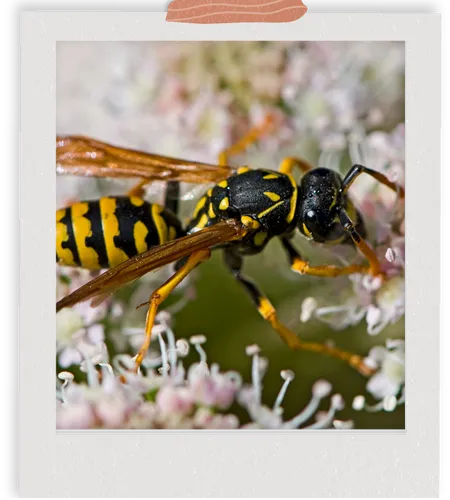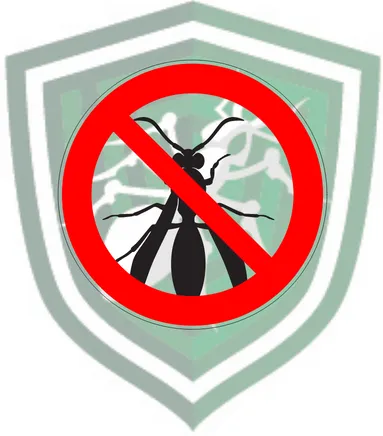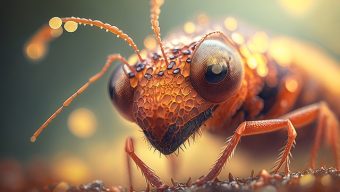WASP REMOVAL FRESNO
Contact us at Valley Integrated Pest Control for Fresno, CA pest control! We are ready to get you started with a detailed inspection to determine what treatments are suitable for you and your property.
WASP REMOVAL SERVICES IN FRESNO, CA
If you’re looking for wasp removal services in Fresno, CA, you have come to the right place. Wasps can be a big problem in Fresno, and if you’ve ever experienced wasp nest colonies on your property, then you know how frightening they can be. The thing that scares many people is the thought of getting stung by a wasp and the pain that it can cause.
It can also be a huge problem if someone in your family is allergic to bee or wasp venom. Because wasps sting multiple times, and not just once like bees, they can be quite aggressive and cause bigger problems than you may foresee.
Let Valley Integrated Pest Control help you with the removal of wasps from your property. Our experienced team of wasp control experts can get rid of any wasp nest carefully and give you tips on how to keep these winged pests off your property and away from your home.

FRESNO WASP CONTROL COMPANIES
Below is information on the most common wasp species that you will encounter in Fresno, Clovis, and the surrounding areas. If you have gotten to the point where you can’t control the wasp colony and the nest has become too large, call our professionals immediately to come out and inspect the issue.

PAPER WASPS
Paper wasps get their name because they collect plant stems and fibers from dead wood to create their nests. They combine them with saliva to form water-resistant nests of gray or brown papery material.
Because of the distinctive design of their nests, some types of paper wasps are also known as umbrella wasps.
Most true paper wasp nests have combs that are open with cells for rearing their brood and a constricted stalk that anchors the nest. Paper wasps secrete an ant-repelling chemical, which they spread around the base of the anchor to prevent egg or brood loss.
The majority of social wasps in the Vespidae family build their nests out of paper, but some stenogastrine species use mud. A small group of eusocial crabronid wasps also builds nests out of chewed plant fibers, though the nest consistency differs greatly from that of true paper wasps due to the lack of wood fibers and the use of silk to bind the fibers.
Wasps love to build their nests in a house’s eaves, tree branches, the end of an open pipe, or an old clothesline. Depending on where they build their nest, some species will vary their nest architecture.
In contrast to yellowjackets and hornets, which can be aggressive, polistine paper wasps will generally only attack if they or their nest are threatened.
Nests in human-inhabited areas may pose an unacceptable risk due to their territoriality and the fact that their stings are quite painful and can cause a potentially fatal anaphylactic reaction in some individuals.
Most wasps are beneficial in their natural environment and play an important role in natural biocontrol.
Paper wasps consume nectar as well as other insects such as caterpillars, flies, and beetle larvae. Paper wasps are often thought to be beneficial by gardeners because they are known pollinators and feed on known garden pests.

COMMON QUESTIONS AND CONCERNS ABOUT WASP CONTROL IN FRESNO
There are several questions that homeowners have when dealing with wasp control in Fresno, so we wanted to give you some helpful information.
Wasps can be found in many different environments, including forests, meadows, and urban areas. They build their nests in trees, on the sides of buildings, or in the ground.
Most species of wasps do not survive the winter. However, the exact fate of a wasp colony in the winter can depend on a variety of factors, such as the species of wasp, the location of the colony, and the availability of food.
In general, social wasps such as paper wasps, yellow jackets, and hornets have an annual life cycle. The colonies that these wasps establish in the spring and summer will not survive the winter.
In the fall, the colony’s worker wasps will begin to die off, leaving only the queen to overwinter in a protected location, such as inside a tree or in a crack in a building. The queen will emerge in the spring to start a new colony.
Solitary wasps, on the other hand, do not live in colonies and generally do not survive the winter. However, some species of solitary wasps lay their eggs in the fall, and the eggs will overwinter until hatching in the spring.
It’s worth noting that some species of wasps have adapted to survive the winter by developing strategies such as hibernation, torpor, or diapause, depending on the specific environmental conditions they face.
Signs of a wasp infestation include seeing many wasps around your home or property, noticing a nest, and hearing buzzing sounds coming from a nest. Wasps can also leave small holes in wood or other materials where they have chewed their way through to build their nests.
Getting rid of wasps typically involves using insecticides or natural repellents, and removing the nest. It’s important to take precautions when removing a wasp nest to avoid getting stung.
Wasp stings can be dangerous for some people, especially those who are allergic. The venom from a wasp sting can cause an allergic reaction, which can lead to symptoms such as hives, swelling, and difficulty breathing.
In rare cases, a severe allergic reaction can cause anaphylaxis, which can be life-threatening.
Preventing a wasp infestation involves sealing up any gaps or cracks in your home’s exterior, trimming overgrown bushes and trees, and keeping garbage cans and other food sources tightly sealed. It’s also a good idea to avoid wearing strong perfumes or bright-colored clothing, which can attract wasps.

CALL VALLEY INTEGRATED PEST CONTROL FOR ALL OF YOUR WASP CONTROL NEEDS IN FRESNO, CA! 559-307-0612
read our Pest Control reviews
Why We're the Right Choice:

We value our clients

Affordable Service Prices

Best Knowledge & Equipment in the Industry






